The Ultimate Guide To Grow Herbs Inside
Here’s everything you need to know about successfully growing herbs inside and outside too. Get a lot of tips and ideas for planting, caring for, and keeping herbs healthy. And see which herbs will work best.
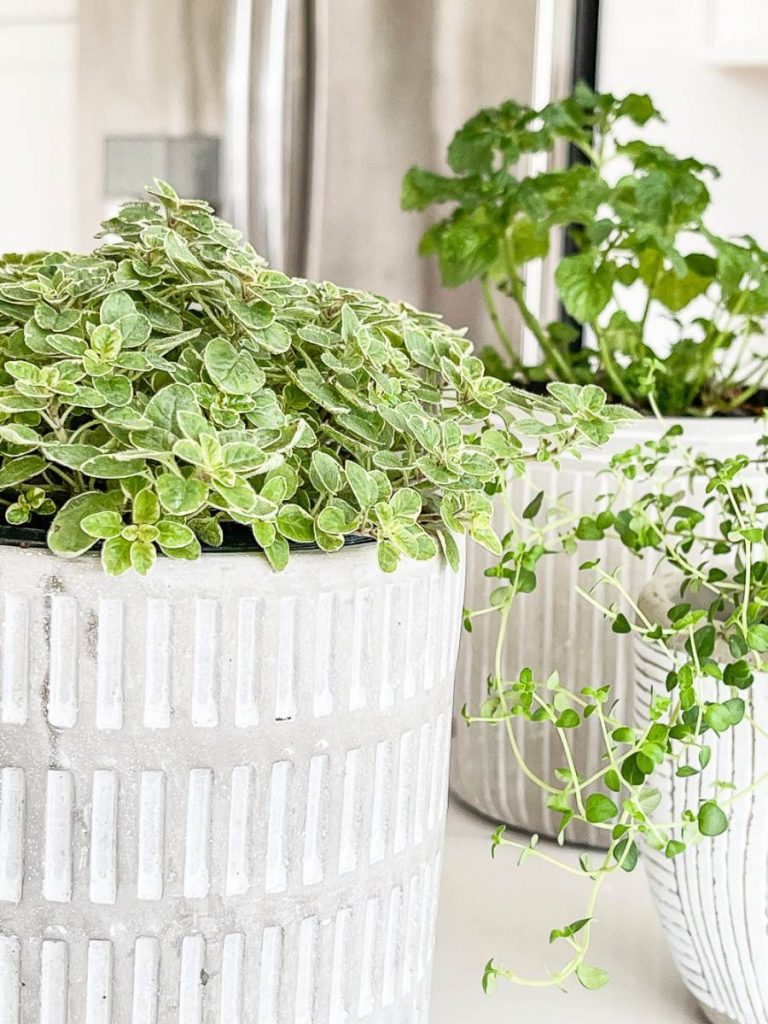
If you want to know how to grow herbs indoors, you have come to the right place. Winter into spring is the perfect time to add a bit of life to your kitchen by potting and enjoying delicious herbs! Not only are they pretty, but they amp up what you are cooking, too! Let’s grow herbs indoors!
This post may contain affiliate links. See our Discloser Policy.
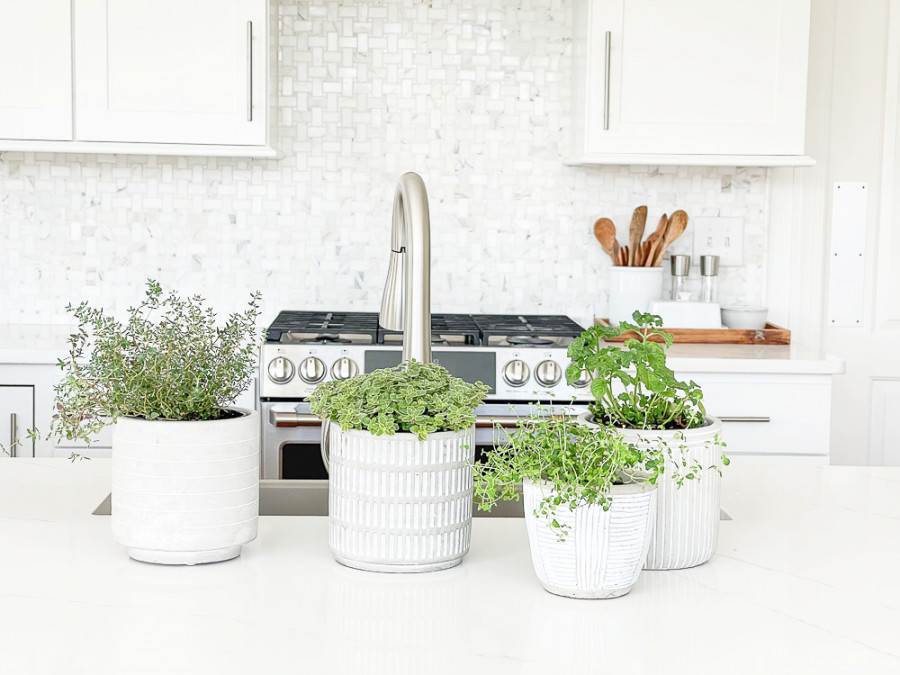
I love that I can snip off the herbs that are on my kitchen island and put them right into my cooking or top off a dish with their fresh taste!
Here are some things that will help you grow herbs successfully indoors! And then when you are ready you can plant them outside!
THERE ARE ANNUAL AND PERENNIAL HERBS
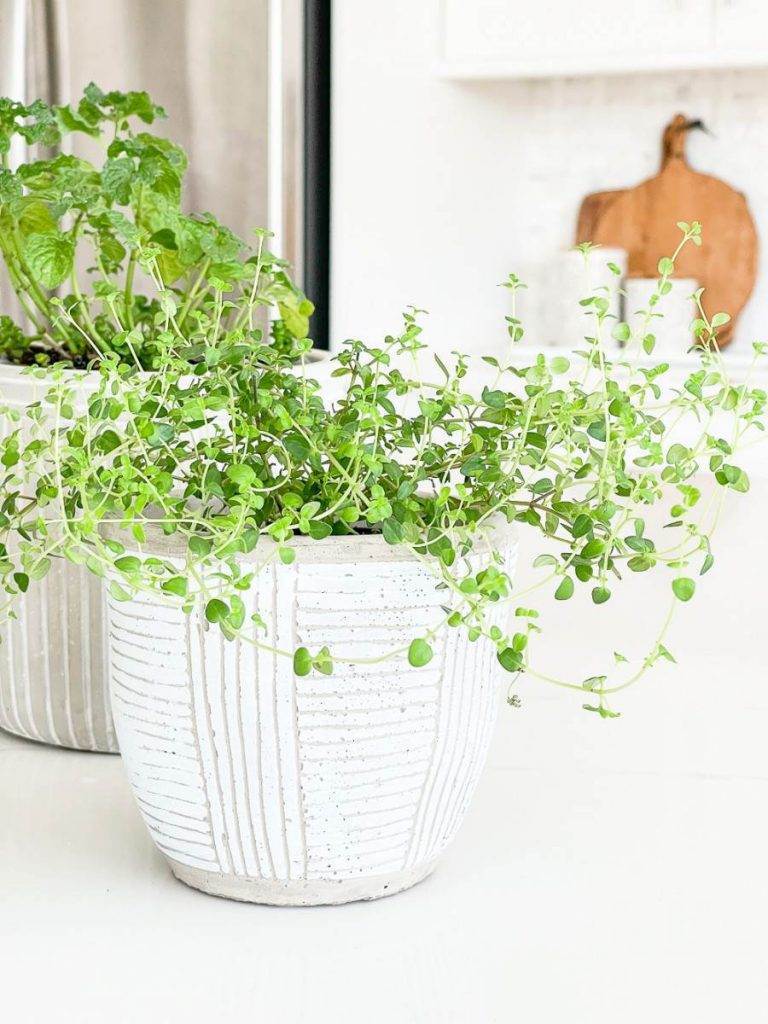
Did you know there are annual and perennial herbs?
Many of each kind can grow successfully indoors, but know that the annual (or biannual) herbs will last a season, and the perennial herbs can grow for years!
Here are a few common herb garden perennials that will work indoors…
- creeping thyme
- oregano
- lemon verbena
- mint
- sage
- chives
This is a short list, but these are the ones I like to plant.
I keep to the perennial list for planting and growing herbs indoors. They tend to be hardier and a little clipping of them goes a long culinary way!
I also love…
- basil
- parsley
I’d have to plant a barrel of basil and parsley to match my cooking love and use of basil and parsley!
HERBS CAN SUCCESSFULLY GROW INDOORS
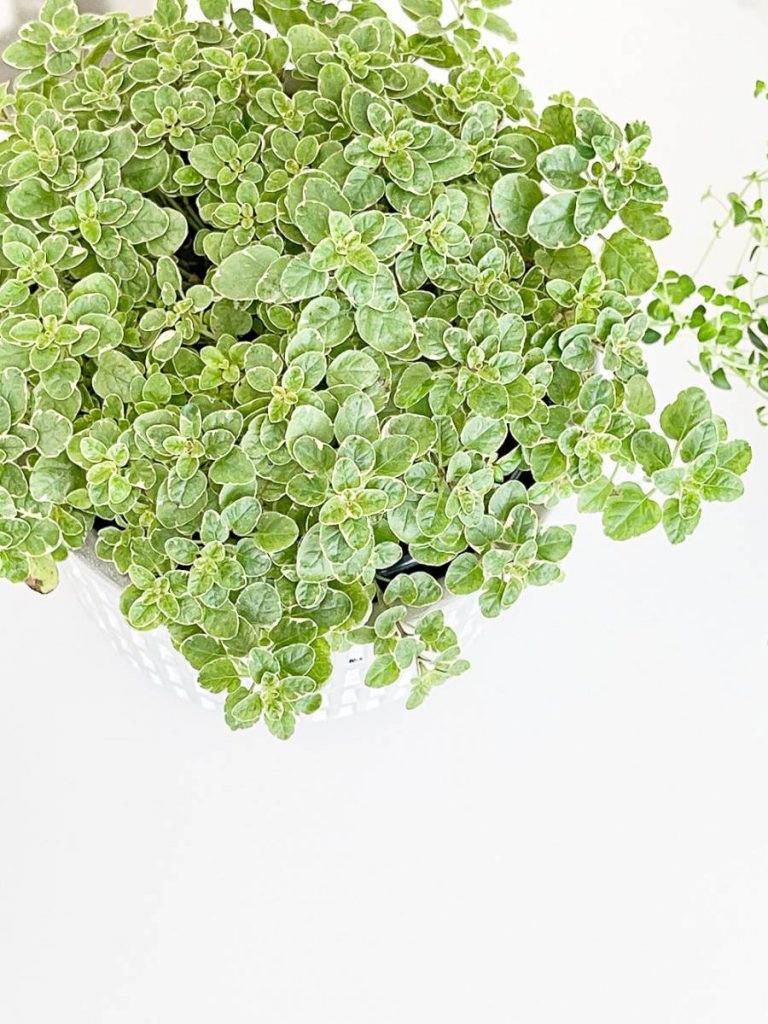
So, how do you grow herbs indoors?
Here’s the truth…
They can be finicky! They need the right conditions to grow, but if you can find that sweet spot, they will bring life and beauty to your home, and your cooking will never taste so good!
I choose herbs that are known for indoor success.
Right now, I have variegated oregano, two types of thyme, curly mint, and rosemary (not shown) growing indoors.
I’ve been looking for chives but have not found any in our local greenhouse. I’m off to an Amish greenhouse later this week to add more mint and chives to our kitchen island.
I’ve had great luck growing these perennial herbs before.
THE RIGHT LIGHT
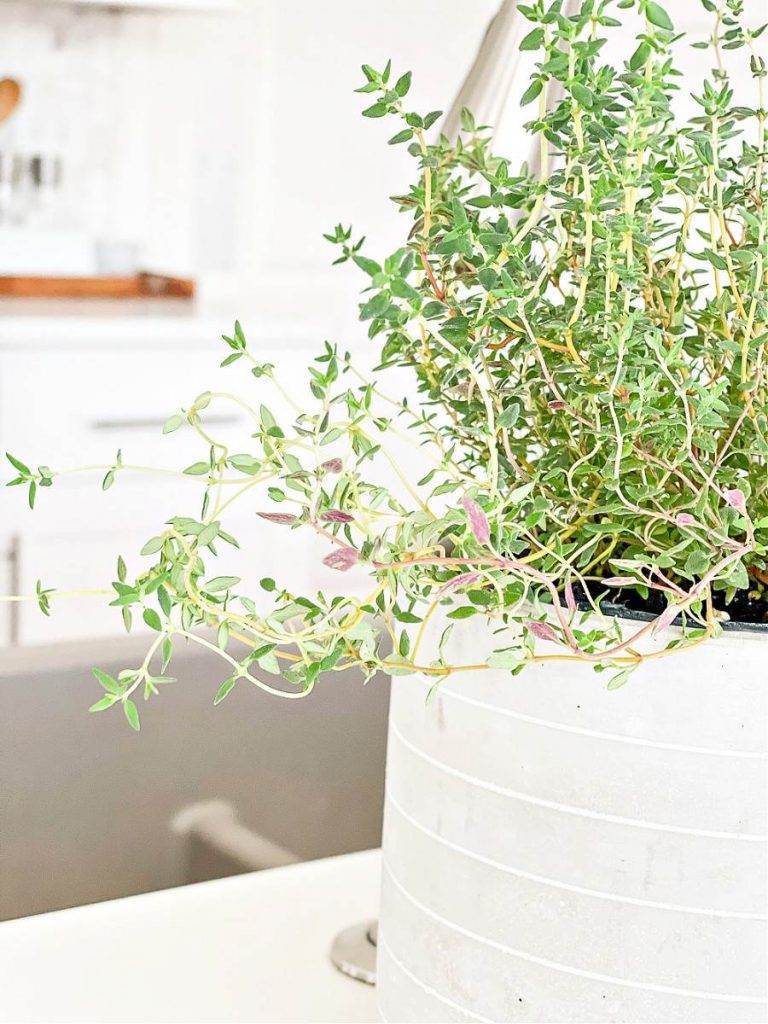
Indoor herbs need bright indirect sunlight. To be honest, if you have one little window, they probably won’t be terribly long-lived. Think of them as long-lasting cut flowers. When they start to get leggy, you can always dry them, freeze them, or use them right away.
But you can grow indoor herbs very successfully if you have a bright room (who says it has to be a kitchen).
Our kitchen is such a sun-filled bright room, so my herbs will love the island/bar!
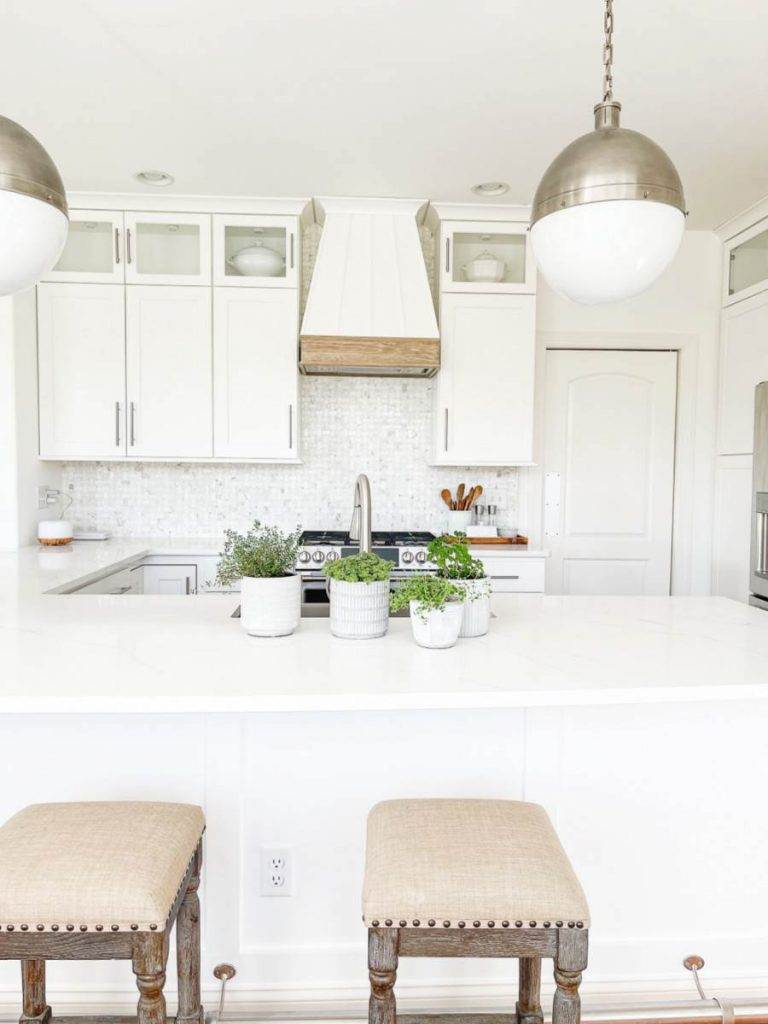
It’s also good to give perennial herbs a bit of direct winter sunlight occasionally. We have a banquette across from the island that gets lots of direct sunshine, so the herbs will hang out there once a week on a sunny day.
It sounds like putting sun-loving herbs on a windowsill might make sense, but that is not a friendly place for them. Drafts and too much direct sun will kill them! So be kind and keep them near, but not on, a south or east-facing window.
They may love the sun when planted outdoors, but they have special needs indoors. Turn plants a little bit each day so they don’t “reach” for the sunshine.
If you want to grow herbs in your kitchen but don’t have lots of light, think about getting a grow light.
They are compact and inexpensive and work GREAT! I just ordered THIS ONE to use on our rosemary herb plant tucked away on a side counter.
UPDATE: I’ve been using my grow light all night for my herbs for about a month, and I can really see a profound difference in the health of my herbs.
WATERING HERBS
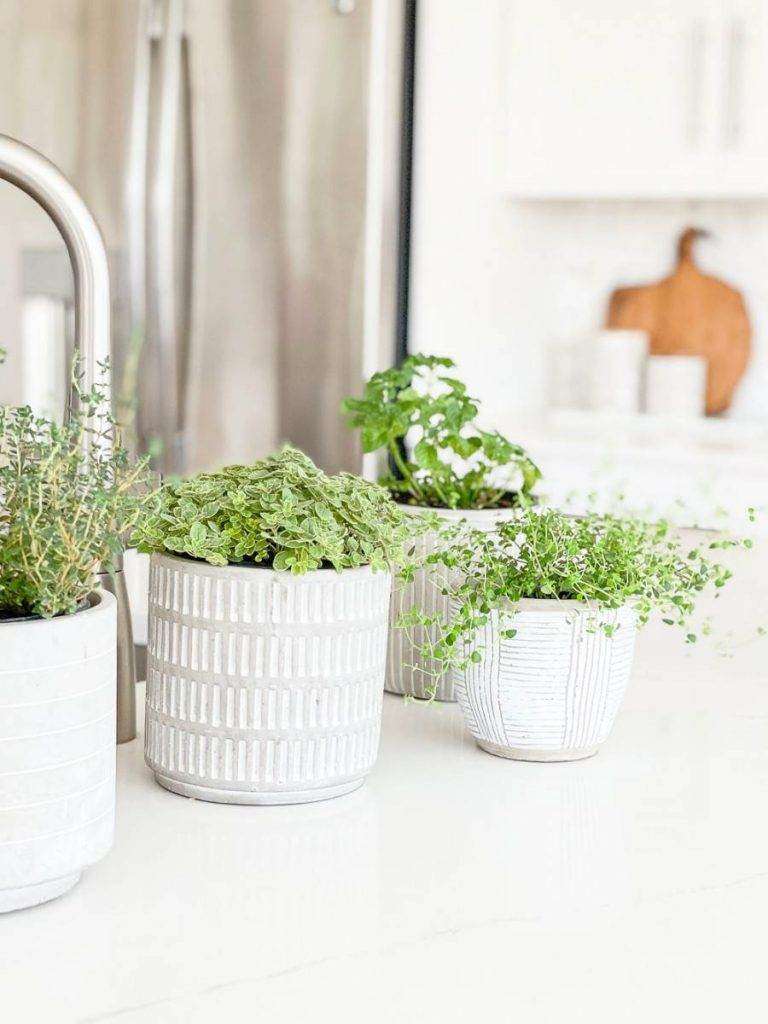
How do I grow indoor herbs? If you want them to thrive, keep them on the dry side. One of the best ways to know if your indoor herbs need watering is by looking and feeling.
Look at the plant. Is it droopy, or do the leaves look shriveled? And put your index finger a good 2 inches into the soil. If it is damp, don’t water it; if it is dry, water the plant.
Most plants don’t like “wet feet”! If their roots are in standing water or waterlogged, they won’t take long to languish. Yellow-ish leaves or dropping leaves may be a sign of root rot from leaving the plant in standing water.
I have a little moisture reader that is so handy and easy to use. I just stick it into the soil, and when it reads dry, I water my herbs. You can see it HERE.
Make sure herb pots have suitable drainage holes.
My indoor herbs are still planted in their original pots. So I give them a good drink, let them completely drain in the sink, and slip them back in their pretty pots.
Water the soil around the herbs and try not to get water on the herb’s leaves. The rule of thumb to remember is to water less often but to water more thoroughly.
If you follow this regime, you will not have drowning plants. They will repay you with lots of new growth!
INDOOR HERBS LIKE THEIR ROOTS TO BE COZY
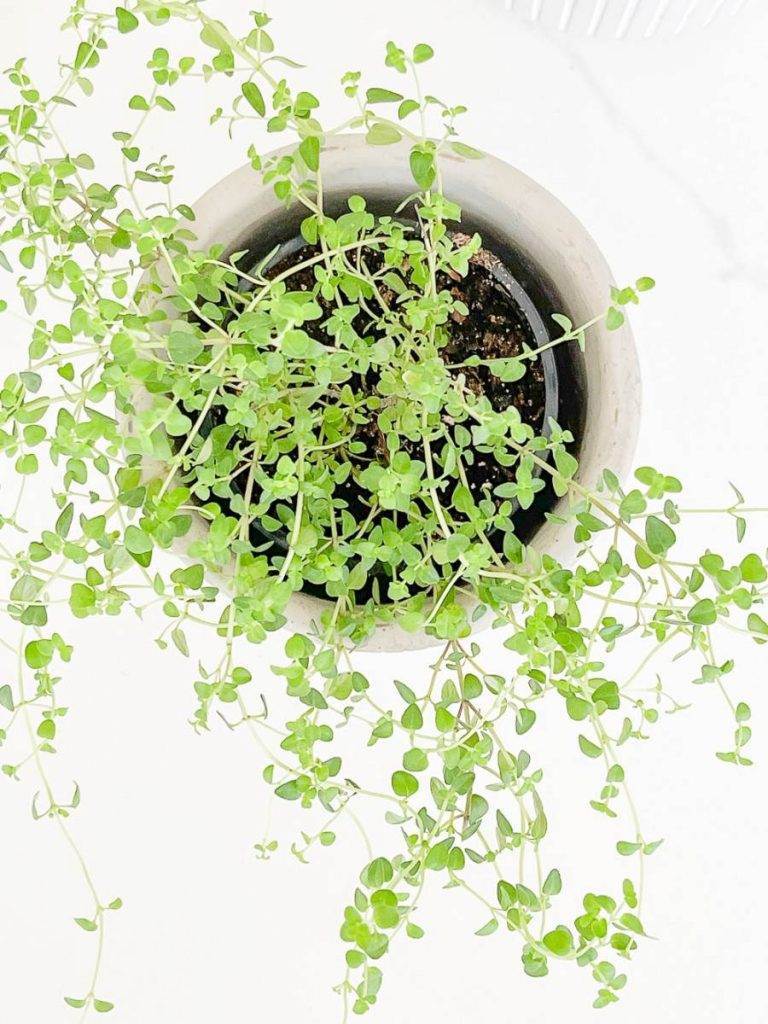
Indoor herbs like to be snugly situated in their posts. Not rootbound but cozy! They do better in a pot that is not too big.
I’ll keep my herbs in their nursery pots, and when they get root-bound, I’ll put them in a post just one size bigger. This is a smart trick. Only go up one size when repotting herbs. This will almost guarantee a happy plant!
Think about Goldilocks to remember what size pot to plant your herbs in. Not too big, not too small but just right!
SOIL AND FERTILIZER FOR INDOOR HERBS
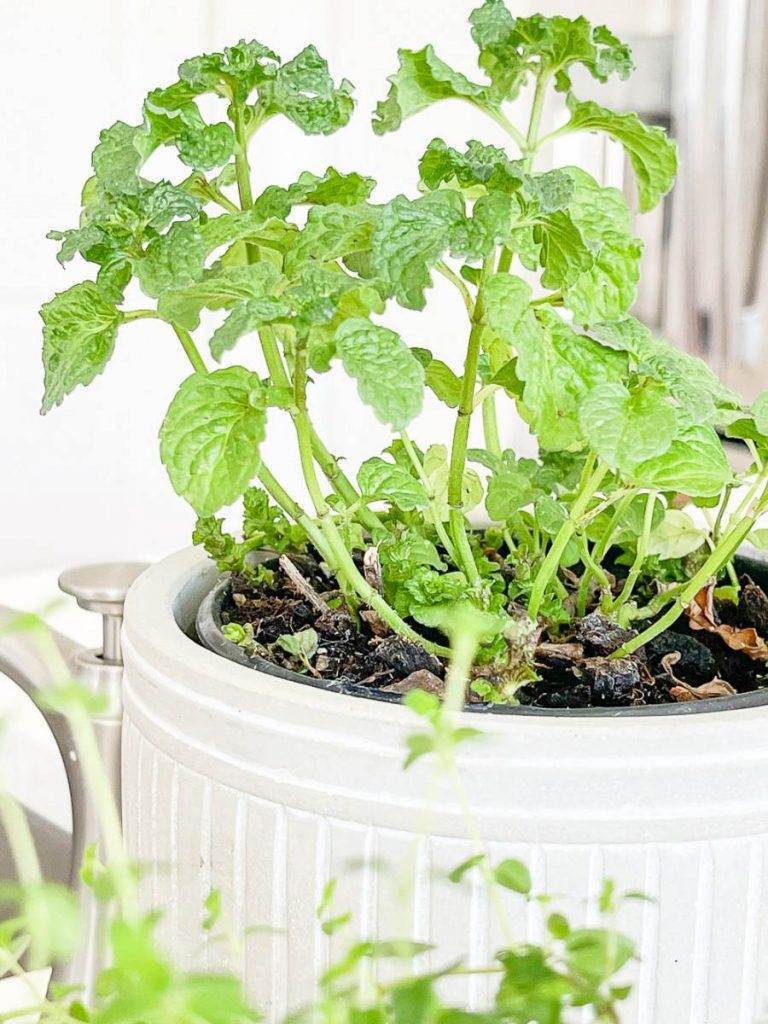
Let’s make it easy and get good-quality potting soil that drains quickly. You really don’t need fancy soil.
Use fertilizer for indoor house plants. Add one-fourth of the recommended strength to the water you water your plants with. Start by fertilizing the herb plants in the spring and twice in the summer. Herbs do not need much fertilizer to grow.
A weak solution of Fish Emulsion works great instead of an all-purpose fertilizer!
BUGS AND PESTS
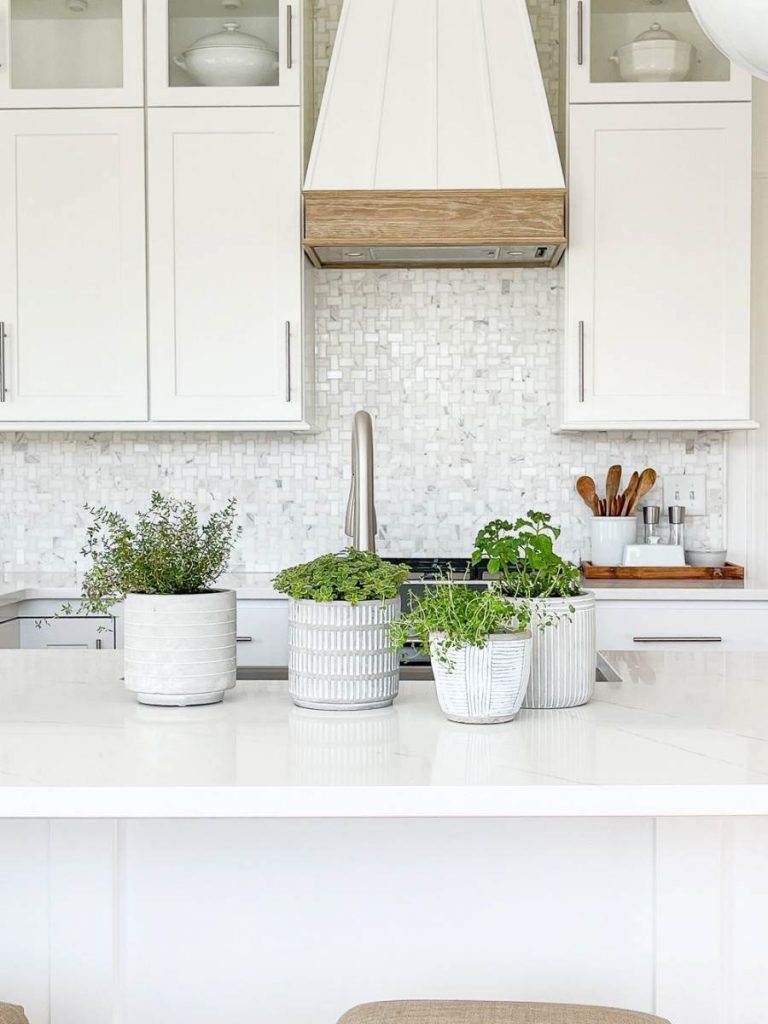
Herbs are pretty pest-free; however, once in a while, a plant will bring pests home with it from a greenhouse.
Swish the leaves in cool, sudsy water, rinse them well, and let them air dry. Don’t let diseased plants get near any healthy plants until there are no more bugs. It’s sad, but it may just be best for the health of your other plants to get rid of the buggy plant.
OTHER WAYS TO KEEP INDOOR HERBS HEALTHY
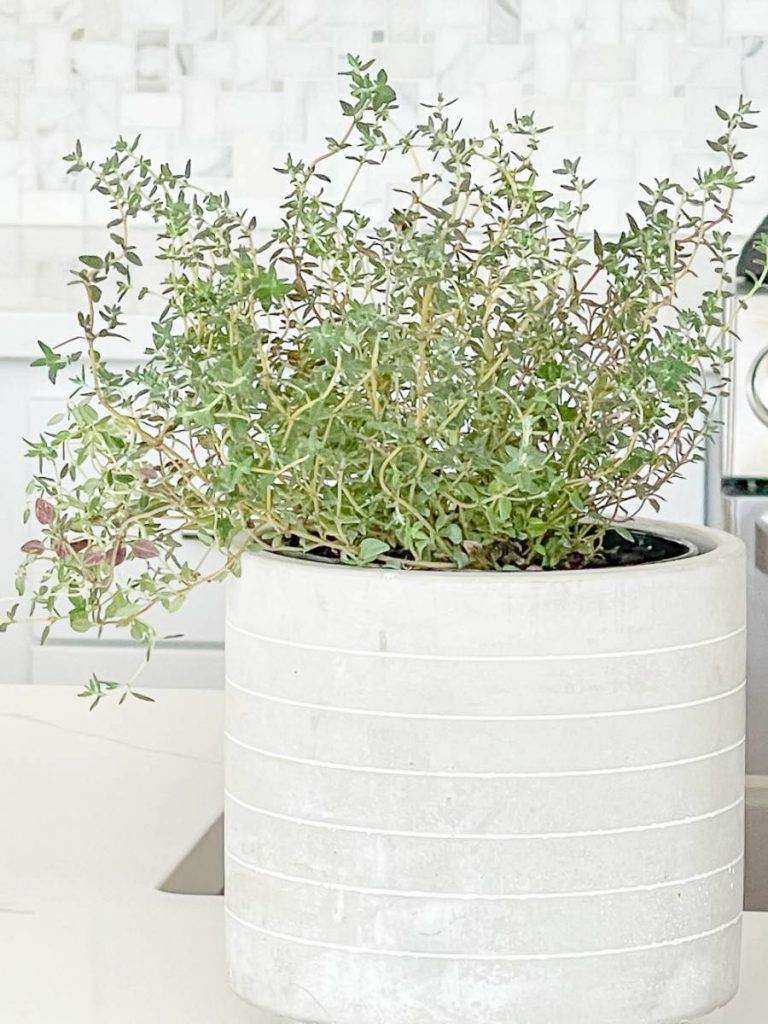
Here are a few other things to do to keep your indoor herbs growing and healthy…
- don’t crowd them together so good airflow can get around and between them
- when they get leggy, give them a good haircut
- snip herbs regularly to keep them growing
- keep them away from cold drafts
- when cutting, make sure to leave one-third of the plant uncut, plants need leaves to make food and grow
- herbs need attention and care
I love the idea of having fresh, organic herbs at my fingertips all winter and spring. I usually plant them in our outdoor herb garden when all danger of frost has passed.
But this year I think I’ll keep them, enjoy them, and care for them indoors!
CLICK THE VIDEO BELOW FOR MORE TIPS
You might like these other HERB GARDENING POSTS…
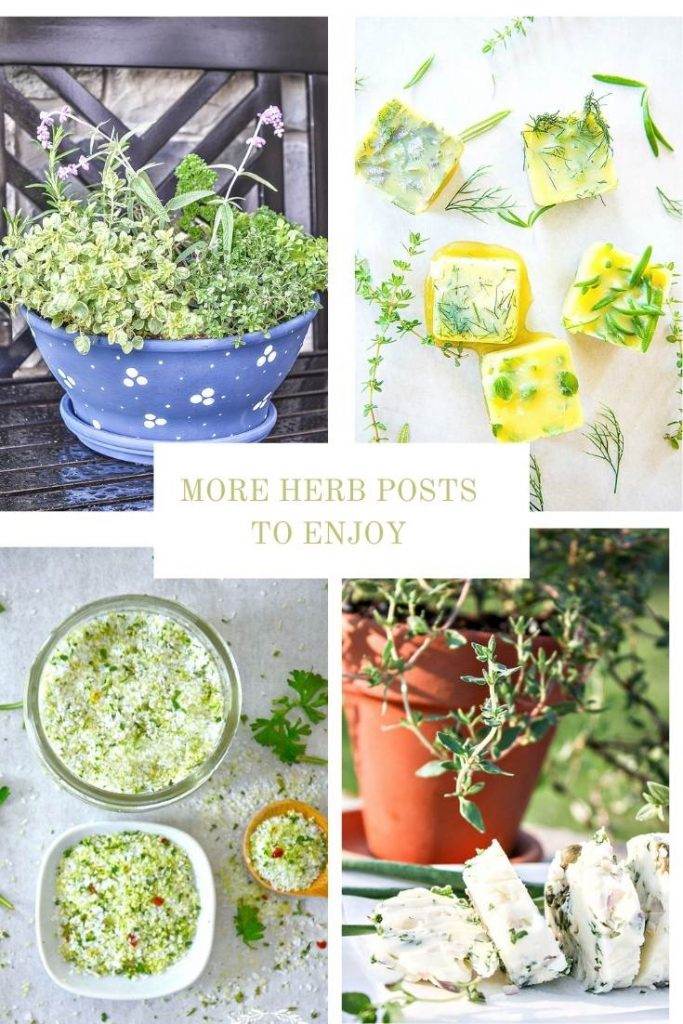
PRETTY CONTAINER HERB GARDEN DIY
And here’s another way to plant a MASON JAR KITCHEN HERB GARDEN. So easy!
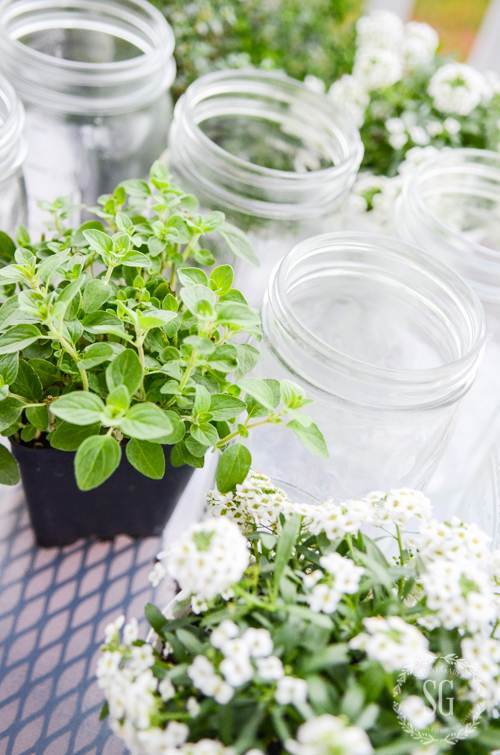
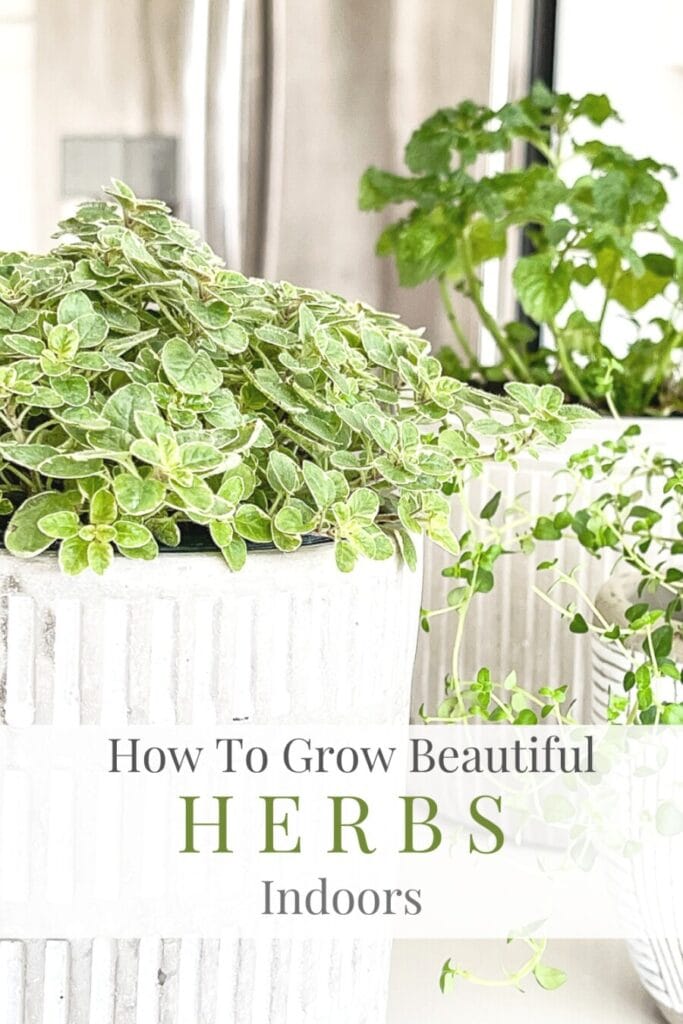
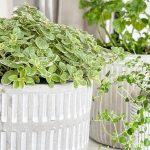
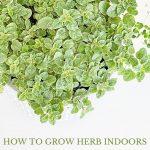
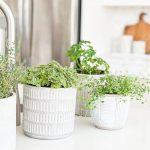
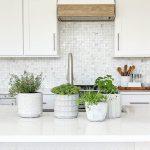

Yvonne, Sounds like your pots of herbs will add a touch of spring to your kitchen. Just make sure they get enough light,they might enjoy a sunny spot on your porch. Too much watering is the number one mistake people make with inside plants so as you said keep them on the dry side. Wish I could send you some chives. Mine have multiplied in my garden very enthusiastically!
Thanks so much for the tips!
Love this post! Thanks for all the growing information. Where do you find your cute pots to put the herb pots in? They are beautiful!!!
Hi Kathy, I found them at our local greenhouse where I got the herbs.
Hi Yvonne, I have been following you for many years. And ❤️ your blog…
I was wondering what kind of stove you have? I’m looking for a duel fuel. Not sure
Though. Thanks, Robin
Mine is a duel fuel. Gas burners and electric oven. We just got a GE Cafe and LOVE it! Here is our range:https://rstyle.me/+4jZPOP_pHi8uNarNbK0RnQ
I too love basil! This year I am going to grow a big tub of it and make lots of pesto etc,
Hey Deb! You might want to check out my favorite Pesto recipe here:https://www.stonegableblog.com/perfect-pesto-the-taste-of-summer/
Deb, One year I made pesto using home grown garlic (garlic scapes in early summer) and some excess kale from the garden. Delish–kale was not noticeable since a lot of the flavor of pesto is from the good olive oil, garlic and cheese.
YUM!
Beautiful pots! Which greenhouse has herbs this time of the year?
We have a greenhouse down the road from us called Hilltop Greenhouse in Chestnut Level. Hope this helps.
Yvonne, if you cannot find chive plants, they are extremely easy to grow from seed. Very very liberally sprinkle the seeds over damp soil, and gently press them down to contact the soil. Keep moist. Then let them grow to 4 inches tall three times, pruning them back 1 inch each time. Then let them grow, trimming as you need them for cooking. Grow them as you do your other herbs.
Oh, thank you Gayle! Good to know!